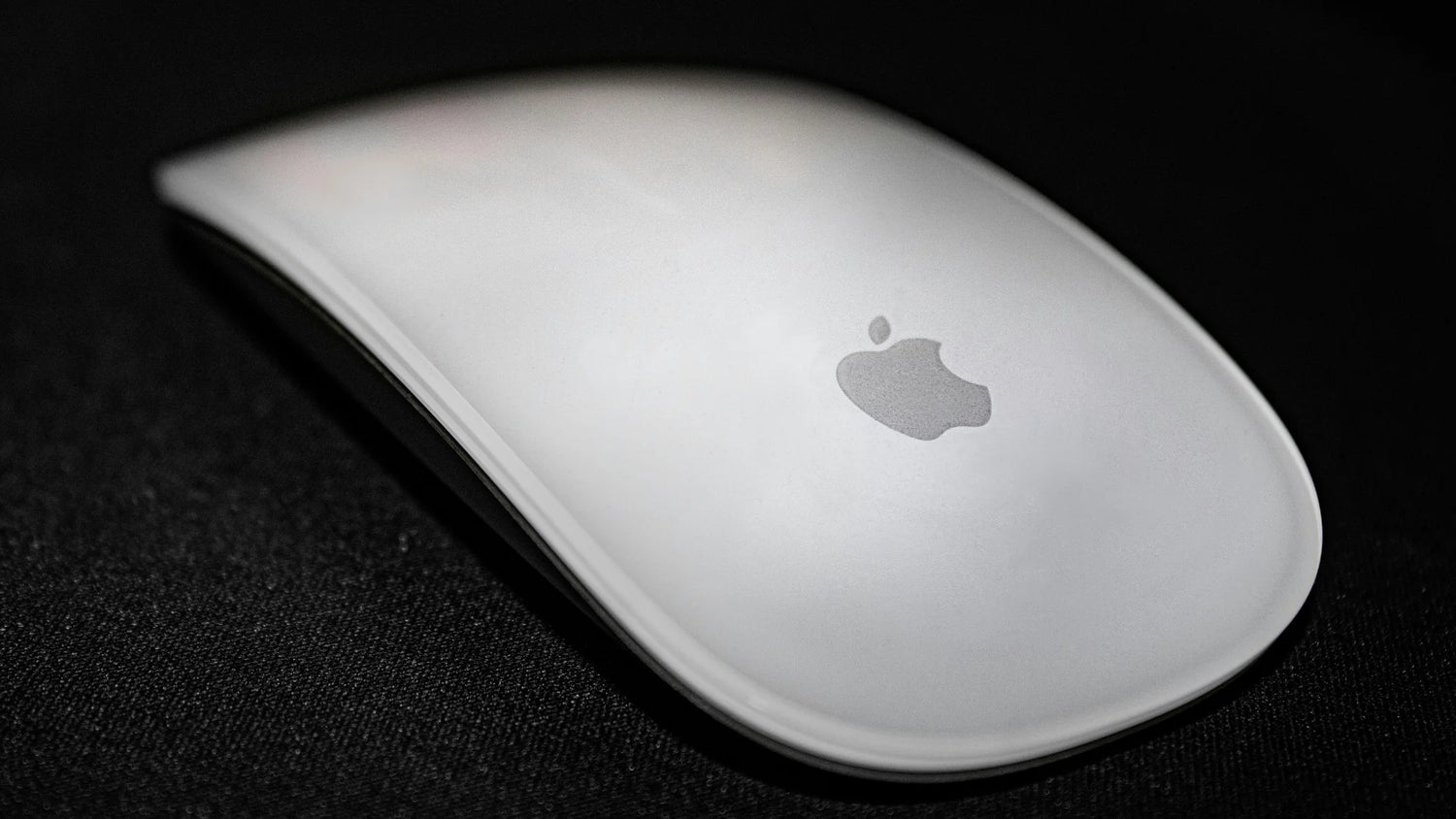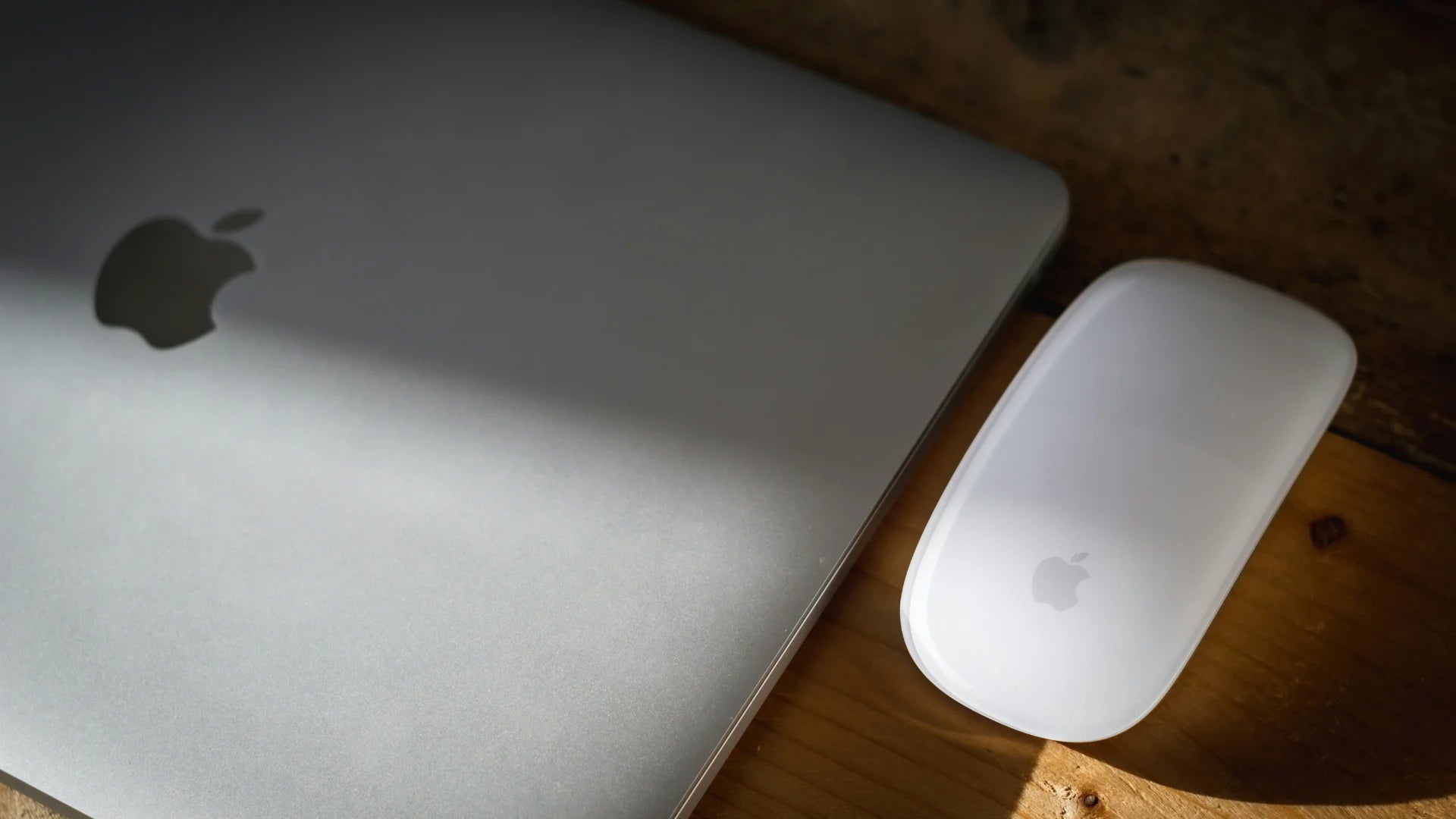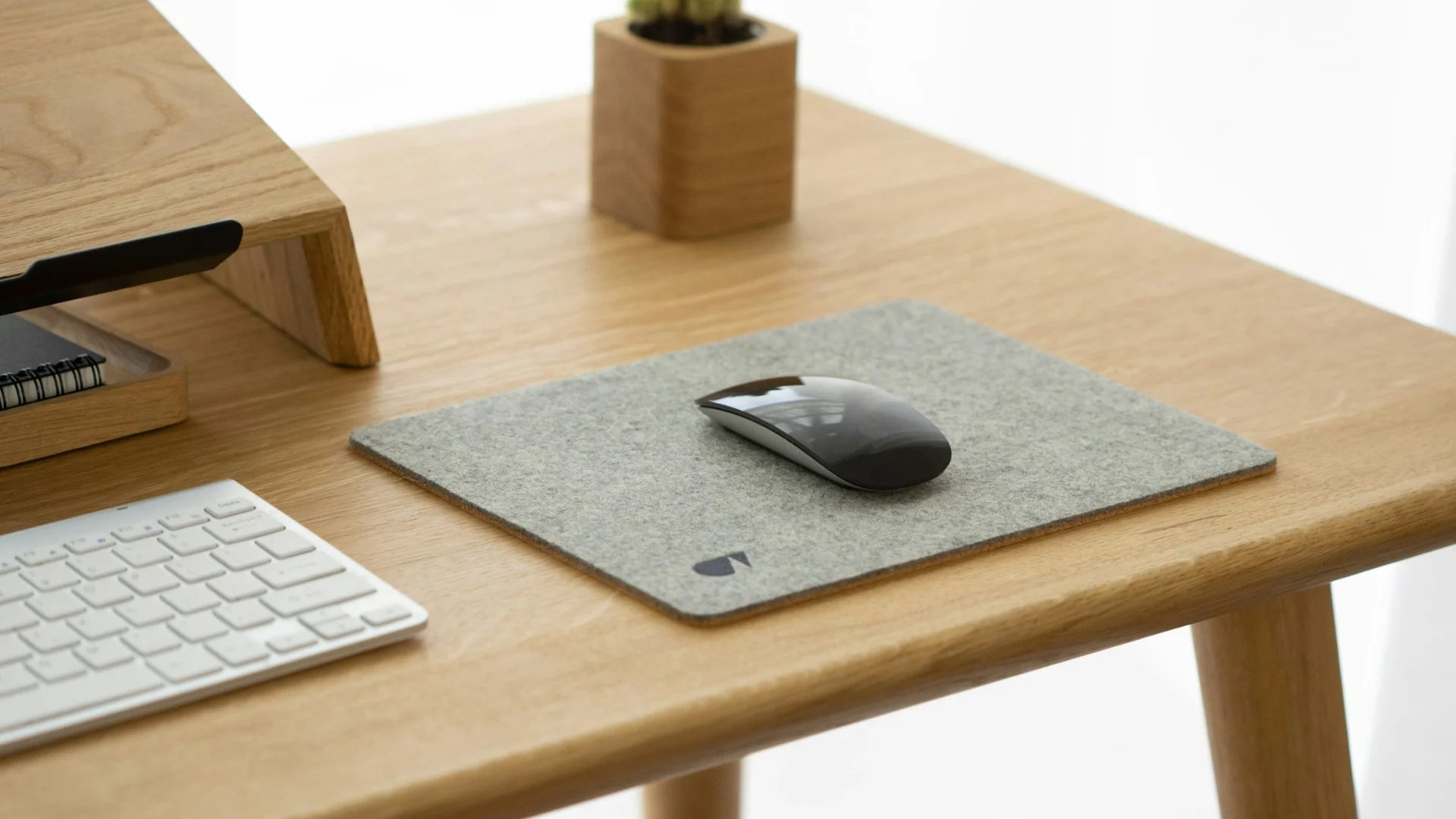Users often associate Apple’s minimalist design with superior functionality, but does it deliver on the ergonomic front? This article delves straight into whether the Magic Mouse conforms to the principles of ergonomic design necessary to prevent discomfort over extended periods. We’ll cut through the aesthetics to give you the essential information on its real-world use, answering the question: “Is the Magic Mouse ergonomic?”
Key Takeaways
- The Apple Magic Mouse is often criticized for its lack of ergonomics, causing discomfort like palm soreness and difficulty clicking due to its aesthetic-focused flat design.
- Comparisons with more ergonomic mice like the Logitech MX Master 3 reveal the Magic Mouse falls short in user comfort, though it remains popular for its sleek design and gesture controls.
- There are aftermarket solutions available that aim to improve the ergonomics of the Magic Mouse, featuring elevated palm rests and enhanced grip for increased comfort during extended use.
Ergonomics and the Apple Magic Mouse: A Critical Look

Apple's Magic Mouse is no stranger to criticism. Users have often labeled it as an ‘ergonomic nightmare’, indicating a prevalent dissatisfaction with its design. Specific issues such as palm soreness, difficulty in clicking, and challenges in usability have been reported, casting a shadow over its aesthetic appeal. It seems that the Magic Mouse’s aesthetic preference may have compromised its ergonomic function, leading to user discomfort.
Despite these critiques, Apple's commitment to design innovation gives hope for future enhancements in ergonomic features for their Magic Mouse line. Nevertheless, the question of whether upcoming versions will achieve a balance between aesthetic allure and ergonomic necessity remains open.
The Flat Dilemma: Comfort vs. Aesthetics
The flat, streamlined design of Apple's Magic Mouse is undeniably attractive. However, users have reported soreness in the arch of their palm after using the Magic Mouse, indicating that the low-profile design may not provide sufficient palm support. The lack of ergonomic considerations in its design has caused difficulties in clicking and general discomfort for some users.
The Magic Mouse’s aesthetic appeal may clash with the ergonomic requirements of many users, who prefer a mouse design promoting a neutral wrist position. Its low profile can cause users to arch their fingers more than they would with a traditional mouse, potentially leading to discomfort and strain over time. So, while the Magic Mouse may look good on your desk, it may not feel as good in your hand.
A solution for the "Flat dilema"? The Solumics Case: A Case made for comfort

Addressing the "Flat Dilemma" head-on, the Solumics Case offers a clever solution to the ergonomic challenges posed by the Magic Mouse's low-profile design.
This innovative accessory is a lightweight, ergonomic shell designed to complement the Apple Magic Mouse's distinctive aesthetics while significantly enhancing user comfort. The Solumics Case not only provides an elevated palm rest for a more comfortable grip but also incorporates side extensions to widen the grip area. This design caters to a more relaxed hand position and assists in maintaining a stable and comfortable grip, akin to adding a plush cushion to an otherwise sleek yet unforgiving office chair.
Compatible with all Magic Mouse versions, the Solumics Case is a breeze to attach and remove, adhering securely without leaving any residue. It ensures that the mouse retains full functionality, allowing touch-sensitive gestures to be performed with the same ease as before.
Gesture Control vs. Grip Stability
Though the Magic Mouse’s gesture control is a fresh concept, it comes with its set of setbacks. The touch-sensitive surface blurs the division between left and right click zones, which can lead to unintended right clicks. The absence of tactile feedback and the support traditional mice provide can increase the risk of repetitive strain due to the reliance solely on the multitouch surface for gesture control.
Additionally, the Magic Mouse’s flat, uncurved design necessitates a claw-like hold, which can lead to hand fatigue and strain with extended use. Is it worth sacrificing comfort for the sake of advanced features?
The Strain of Simplicity: When Less May Not Be More

Apple’s design ethos has always revolved around simplicity and minimalism. The Apple Mouse is no exception. However, the minimalistic design of the Magic Mouse may lead to wrist strain as it lacks necessary ergonomic support. While the aesthetics of the Magic Mouse are appreciated, its slim profile and lack of ergonomic features have been points of contention, especially for those using the device for long hours.
Despite continuous criticism of its ergonomics, Apple hasn’t significantly modified the Magic Mouse’s basic design, suggesting a possible preference for aesthetics over functionality. But when does simplicity become oversimplification? When does less stop being more?
From Desk to Palm: The Journey of Discomfort
The Magic Mouse’s design principle favors minimalism, which frequently compromises ergonomic comfort, which can result in user discomfort over time. The sleek look of the Magic Mouse may be pleasing to the eye when it’s sitting on your desk, but the moment it moves to your palm, the story may change.
Some users have commonly reported discomfort and pain in their fingers and hands, stemming from the Magic Mouse’s sharp edges and low profile, which necessitate an awkward grip. The lack of a contoured grip for palm support can be a significant contributing factor to the strain and discomfort experienced after prolonged use.
The minimalist style of the Magic Mouse yields a sleek appearance but overlooks the ergonomic characteristics essential for consistent comfort during use, making it arguably the worst mouse for some users. Is the Magic Mouse uncomfortable for you? Explore strategies to improve comfort and reduce strain in our guide!
Comparing Apple and Logitech

A major difference emerges when we draw a comparison between the Magic Mouse and its rival, the Logitech MX Master 3, in the quest for the best mouse. While the Magic Mouse is noted for its sleek design and gesture capabilities, it sometime falls short in ergonomic comfort compared to the MX Master 3, which is more tailored towards user comfort.
Users report that the Logitech MX Master 3 mouse provides a more comfortable experience than the Apple Magic Mouse 2 due to its design that accommodates various grips. The MX Master 3 features a contoured shape and thumb rest which keep the hand in a more natural position to help lower the risk of discomfort and repetitive stress injuries.
Contrasting the Magic Mouse with ergonomically superior mice, such as the Logitech MX Master 3, highlights opportunities to improve the ergonomics of Apple’s mouse range. It's akin to comparing different worlds of design philosophy, yet at times, a shift in perspective is precisely what's needed.
A User's Perspective: The Magic Mouse Experience
Hearing from the users themselves offers the most accurate understanding of a product’s performance. Many Magic Mouse users have reported discomfort during extended periods of use, even though the Apple mouse operates seamlessly.
The Magic Mouse, although a visual treat, has often left users yearning for more comfort. The Solumics Case has been mentioned as a potential solution to enhance the overall user experience by reducing fatigue associated with the flat design of the Apple Magic Mouse.
Hours of Use: A Test of Endurance
The seamless operation of the Apple Magic Mouse 2 garners high praise. It’s like a swiss army knife of the computer world, able to perform a multitude of tasks without breaking a sweat. But what about the users? How do they fare after hours of continuous use?
Despite its functionality, some users report discomfort stemming from the Magic Mouse 2’s design following a few hours of use. After a few hours of scrolling, clicking, and dragging, for some the sleek design starts to feel less like a luxury and more like a demand for endurance. The Magic Mouse becomes less of a tool and more of a test of resilience.
The Switching Point: When Users Seek Alternatives
Compared to devices like the Magic Trackpad that require less desk movement, the Magic Mouse’s lack of ergonomics incentivizes users to opt for alternatives with superior ergonomic support. But when does a user decide that enough is enough? When does the discomfort outweigh the allure of the Magic Mouse’s sleek design?
Users often switch from the Magic Mouse to alternatives due to impractical design choices, such as the placement of the charging port on the bottom of the device which makes it unusable while charging with a lightning cable. At this point, the magic starts to fade, and the mouse becomes just another piece of hardware, pushing users to seek alternatives.
Design Evolution: Is Apple Listening?

Ergonomic design has gained momentum as a crucial factor for user satisfaction, as a substantial part of the feedback on the Magic Mouse revolves around comfort and ergonomic issues. The question is, is Apple listening? Are they taking into account the feedback from their users?
Considering the consistent user feedback on the need for improved ergonomics, it can be speculated that future designs of the Apple Mouse may lean towards more user-friendly shapes and features.
Lessons Learned: Past Design Decisions
Reflecting on the evolution of the Magic Mouse, it is evident that Apple has drawn valuable lessons from its past designs. The Magic Mouse 2 displayed technological advancements over the original model. Apple replaced disposable batteries with a built-in rechargeable lithium-ion battery in Magic Mouse 2, and it features an optimized laser tracking system for increased precision and responsiveness.
These changes, although minor, reflect Apple’s attention to customer feedback and their commitment to improving their products. But are these changes enough to fix users’ concerns about better ergonomics?
The Future of Apple's Mice: Ergonomic Expectations
The persistent demand for improved ergonomics in Apple’s mice indicates that future designs might favor more user-friendly shapes and features. But what can we expect from Apple in the future? Will they continue to prioritize form over function, or will we see a shift towards more ergonomic designs?
Given the consistent feedback from users, one can speculate that future iterations of the Magic Mouse might include more ergonomic considerations. Perhaps, we might see a Magic Mouse that not only looks magical but feels magical in the hand as well, living up to the expectations of the magic mouse’s reputation.
Summary
The Apple Magic Mouse, with its sleek design and innovative features, is indeed a marvel. However, its lack of ergonomic design has been a point of contention among users, causing discomfort over prolonged use for some. Alternatives like the Logitech MX Master 3 offer better ergonomic support, leading some users to switch. As Apple continues to receive feedback from its users, it’s possible that future designs of their mice may lean towards more user-friendly shapes and features. Ultimately, only time will tell if Apple can conjure up a design that marries form and function beautifully. As we ponder over "Is Magic Mouse ergonomic?", maybe in the future, we can positively reply to that question with a resounding yes.
Frequently Asked Questions
You can make your Magic Mouse ergonomic by using the Solumics Case, which is designed to help you maintain a healthier posture while using your mouse, making it perfect for daily use
Yes, for many users, the Magic Mouse's flat, contourless shape can cause discomfort and strain on the hands and wrists during prolonged use. Its minimalist low-profile design creates significant ergonomic issues.
The Apple Magic Mouse stands out for its multi-touch gestures and inertia scrolling, designed for use with macOS. It's also lightweight at only 99 grams, making it easy to move around.
An ergonomic mouse is designed to keep your arm in a more natural position, limit wrist and forearm rotation, and reduce stress on these areas. It's shaped to fit your arm and wrist like a glove, enhancing comfort and productivity.
No, the Solumics Case is designed to complement the Magic Mouse, ensuring that all functions, including gesture controls, remain accessible and fully operational.



